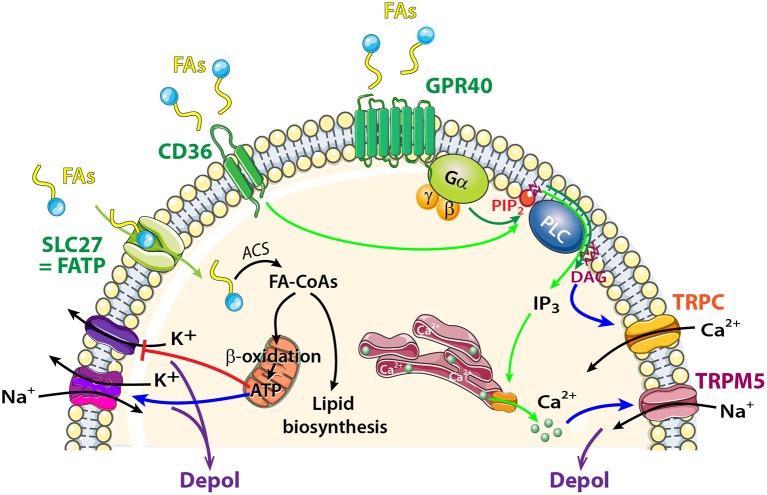Figure 5.
Schematic model showing FA sensing signaling pathways that might modulate neuronal activity of central olfactory areas. The transporter SLC27 induces influx of FAs, and acyl-CoA synthetase (ACS) to esterify FAs to fatty acyl-CoAs (FA-CoAs). Following mitochondrial β oxidation of FA-CoAs, production of ATP induces depolarization by acting on a wide variety of ATP dependent ion channels. FAs Receptors: Activation of CD36 by FA binding (light green arrows) causes phosphorylation of protein tyrosine kinases, leading to generation of inositol 1,4,5-trisphosphate (IP3) that induces Ca2+ release from the endoplasmic reticulum. [Ca2+]Iincrease depolarizes the membrane via TRPM5 channel. FAs receptors 7TM GPR40 receptor signaling (dark green arrows) acts through heterotrimeric G-proteins and produces IP3 and diacylglycerol (DAG). Phospholipase C (PLC) and DAG activate transient receptor potential cation channel subfamily C (TRPC).

